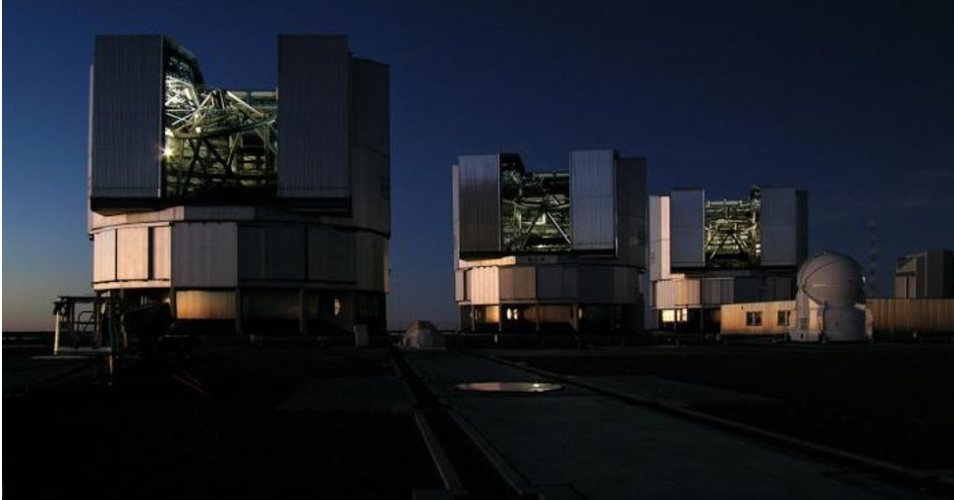
Three of the four telescope units of the Very Large Telescope (VLT) viewed at night.
Climate change associated with global warming can have a significant impact on astronomical observations, a new study has found. These findings could not only help astronomers improvise their observations according to varying environmental settings, but also play a significant role while designing new telescopes, such as the Extremely Large Telescope (ELT) that is being built near Cerro Paranal in Chile.
For this research, an international team of atmosphere scientists, climate researchers, astronomers, and meteorologists came together to analyse the important meteorological parameters that determine the quality of astronomical observations. The study primarily focused on understanding the degree to which climate change affects the quality of astronomical observations.
The research team explored parameters such as temperature, wind direction and speed, and the water vapour in the atmosphere at the Very Large Telescope (VLT) at the Paranal Observatory in northern Chile. This observatory was particularly chosen due to the availability of many environmental sensors that could register local meteorological conditions.
The data, which was collected over the span of thirty years, helped the research team identify long-term trends and, therefore, understand the effects of climate change on future observations. The results concluded that the increase seen in the temperatures in this particular region was above the world average, which added to the skewed findings. Moreover, air turbulence also caused a heightened image blur in the telescope’s captures.
“The data showed a 1.5°C increase in near-ground temperature over the last four decades at the Paranal Observatory. This is slightly higher than the worldwide average of 1°C since the pre-industrial age,” said Professor Susanne Crewell from the Institute of Geophysics and Meteorology, University of Cologne, US.
The original cooling system of the VLT was designed for conditions during the time. But as the temperatures have climbed and gotten warmer since then, the quality of the observations has been harmed due to recurring turbulences caused by increased temperature. The bleakest scenario according to IPCC is an expected rise of 4°C within the next 100 years—a prospect that has to be taken into consideration when building the 39-metre Extremely Large Telescope (ELT) at a nearby site.
Apart from the VLT, which is operated by the European Southern Observatory (ESO), three other examples were also used to display how the astronomical observations are already being impacted by climate change, and how, in the future, climate change may hinder the working of astronomical observatories.
Among these hindrances, the primary problem faced by astronomers is the lessened resolution caused by turbulence within the telescope dome, which leads to decreased ‘dome seeing’.
A ‘wind-driven halo’ was also observed, caused by the surge in wind shear in the upper troposphere related to the jet stream. This phenomenon occurs when turbulence in the atmosphere varies so quickly that the telescope’s control system fails to correct them. This has the potential to hinder the exoplanet studies, as it limits the contrast abilities of the instrument. The rise in water vapour in the atmosphere could also lead to reduced astronomical signals.
The research further detected a rise in turbulence in the air layer close to the ground which led to the distortion of images—caused due to the fast alternation of cold and warm layers. However, this cannot be attributed to climate change completely, as constructional changes also played a part.
Overall, the findings made by this study were carried in the current issue of Nature Astronomy, published on September 10, which is dedicated to the topic climate. The special issue aims to raise awareness in astronomy for climate aspects that are important for the work of astronomers.
Meanwhile, the study, named ‘The impact of climate change on astronomical observations’, can be accessed here.
Article Credit: weather
